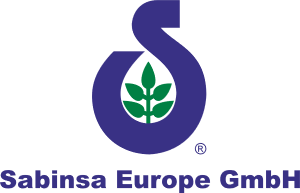SCurcumin C3 Reduct®
- Curcumin C3 Reduct (C3 Reduct) is a registered trademark given to tetrahydrocurcuminoids. Tetrahydrocurcuminoids are cascading antioxidants, and the major metabolites, of curcuminoids
- Tetrahydrocurcuminoids are the colorless hydrogenated compounds derived from Sabinsa's Curcumin C3 Complex® curcuminoids: curcumin, demethoxycurcumin and bisdemethoxycurcumin of which curcumin is the main phenolic compound
- Curcumin C3 Complex® is the standardized turmeric extract manufactured and marketed by Sabinsa. It is standardized for 95% total curcuminoids
- The three curcuminoids are curcumin, demethoxycurcumin and bisdemethoxycurcumin of which curcumin is the main phenolic compound
- C3 Reduct is a standardized extract obtained by hydrogenating the curcuminoids from the rhizomes of the Curcuma longa (turmeric) plant
- Yes, tetrahydrocurcuminoids are naturally present in small quantities in the Zingiber officinale (Ginger) plant, as well as in the rhizome of Curcuma zedoaria (Thai Zeodary), an antiinflammatory material in Thai traditional medicine system
- Thus, tetrahydrocurcuminoids are found to occur naturally in plants that have been consumed either as part of food or traditional medicine
- C3 Reduct is expected to be more bioavailable compared to unmodified curcuminoids
- It is speculated that the therapeutic effectiveness of Curcumin is limited due to its poor absorption in the body with oral doses of curcumin resulting in traces in the blood
- C3 Reduct addresses these issues, because curcumin is converted enzymatically into more easily bioavailable, pharmacologically more active tetrahydrocurcumin inside the intestine/other tissues 1 and it is easily absorbed from the GI tract
- It is not only the curcumin, but its metabolite, tetrahydrocurcumin, which is equally responsible for its biological function in the body
- (1 PNAS (Proceedings of National Academy of Science), 2011)
- Curcumin in the human intestine is converted into tetrahydrocurcumin by E. coli and that the resulting tetrahydrocurcumin is responsible for various activities associated with curcumin in the human body
- E. coli strain K12, a commensal micro-organism had highest curcumin converting activity in human intestine1
(1 PNAS (Proceedings of National Academy of Science), 2011) - The enzyme from E. coli involved in curcumin conversion is named CurA (NADPH-dependent curcumin/dihydrocurcumin reductase)
- CurA enzyme from E. coli strain K-12, substrain DH10B catalyses two reaction steps wherein
- the reduction of curcumin to dihydrocurcumin (DHC) and
- ) the subsequent reduction of DHC to tetrahydrocurcumin
- In addition to the intestinal resident E. coli, curcumin is also metabolized by other reductive enzymes in human body to tetrahydrocurcumin
- Tetrahydrocurcumin may be more easily absorbed from GI tract than curcumin itself2
(2 Okada et al Journal Of Nutrition, 2001) - Curcumin converts in the intestine into tetrahydrocurcumin before getting absorbed in the body
- When taken orally, tetrahydrocurcumin is more easily absorbed in the intestine than curcumin
- Tetrahydrocurcuminoids show tremendous potential with respect to the following properties:
- Antioxidant*
- Anti-hyperlipidemic*
- Anti-ageing*
- Anti-inflammatory*
- Anti-glycation*
- Anti-Alzheimer*
- Hepatoprotective*
- Cardioprotective*
- Anti-diabetic*
- Renalprotective*
- Anti-cancer*
- A safety study conducted by Sabinsa on healthy subjects for 28 days using 300 mg once daily of C3 Reduct showed no adverse effects. C3 Reduct can be safely used as an oral supplement
- Acute oral toxicity of tetrahydrocurcuminoids is > 5000mg/kg body weight
- Tetrahydrocurcumin has better absorption potential in intestine than curcumin
- Tetrahydrocurcumin shows better stability at physiological pH
- Tetrahydrocurcumin is ultimately the pharmacologically active form of curcumin inside the body
- Tetrahydrocurcumin has also shown stronger pharmacological activity than curcumin
- Tetrahydrocurcuminoids have an off-white color, and is therefore non-staining, and photo-stable
- Tasteless
- Potentially good antioxidants when compared with grape seed extract and Vitamin C
- Tetrahydrocurcuminoids have better pH stability
- Formulation of solid dosage as well as liquid dosage is less cumbersome in tetrahydrocurcuminoids
- Tetrahydrocurcuminoids provide possibilities of formulating wider range of formulations such as color-free beverages, non-staining oral care products, which are not possible with curcumin
- Higher absorption
- Better antioxidant activity
- Better pharmacological activity in most cases over curcumin
- Tetrahydrocurcuminoids are a cascading antioxidant (in comparison to standalone antioxidants, tetrahydrocurcuminoids will act as an antioxidant for a longer time and show cumulatively stronger activity)
- Less yellow staining than curcumin
- Higher stability at physiological pH levels
- Tetrahydrocurcuminoids are the most active metabolite which curcumin forms in the body
- Yes, C3 Reduct is obtained from hydrogenating curcuminoids from sustainably-grown Curcuma longa
- No, C3 Reduct is not prepared from genetically-modified organisms
- 200-400 mg in two divided doses
- Sabinsa's manufacturing facilitiesare cGMPand located in India
- It was recently inspected by FDA and is qualified for manufacturing nutritional supplements
- Yes. Patents claim tetrahydrocurcuminoids for its use in regulating random protein cross-linking and thereby treatment of melanoma, aging and inflammation (US 6653327, AU 2006235807, EP 1171144, EP 1328263, NZ 514884, US 8119696, JP 2000-610495)
- Patents provide for administration of tetrahydrocurcumin by oral, topical as well as parenteral route
- Yes, C3 Reduct is Halal-certified
- Yes, C3 Reduct is Kosher-certified
- Yes, C3 Reduct is allergen-free
- For more information visit www.c3reduct.com and contact your Sabinsa representative





